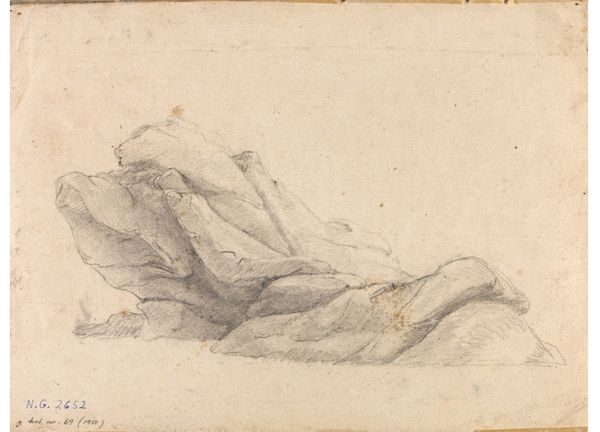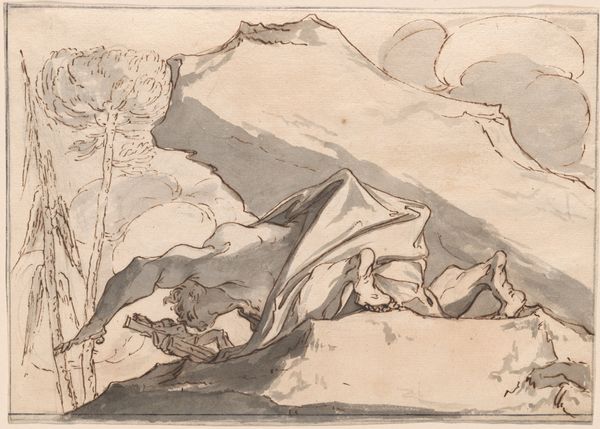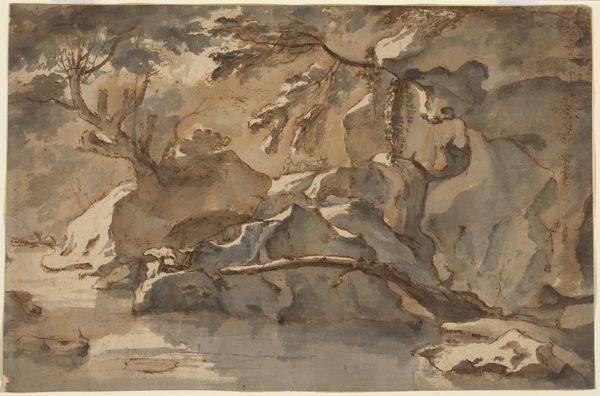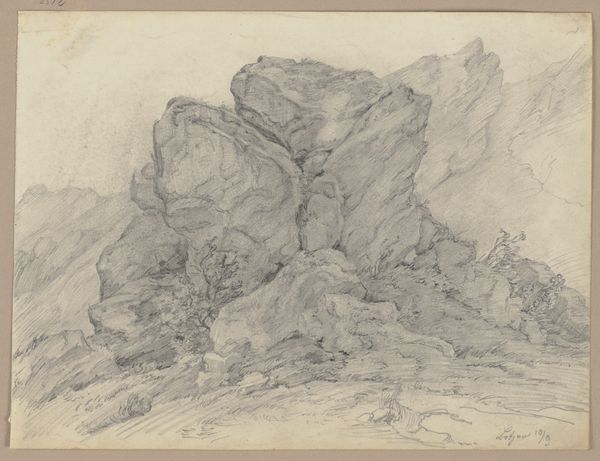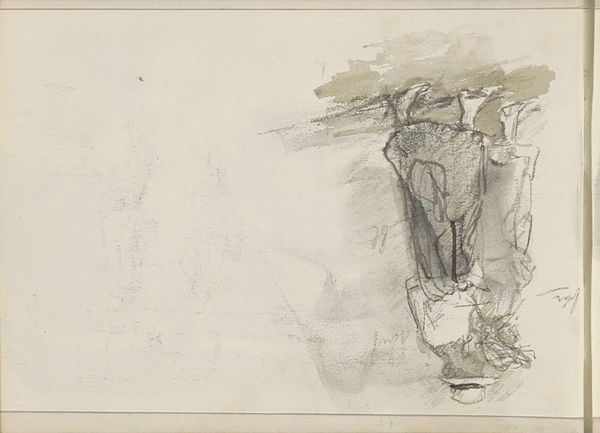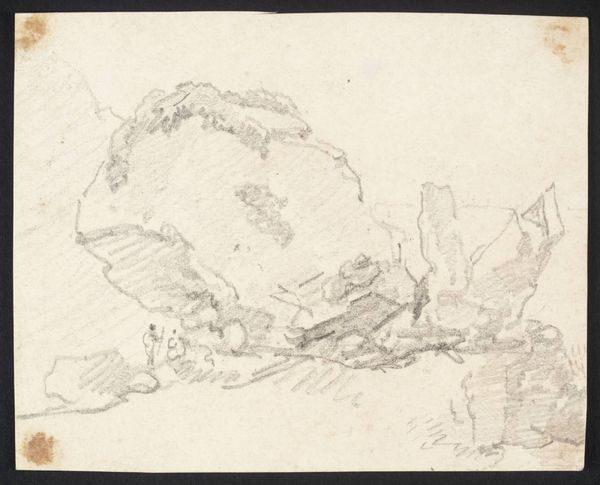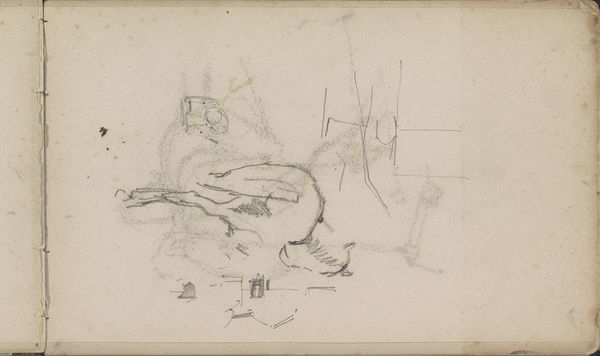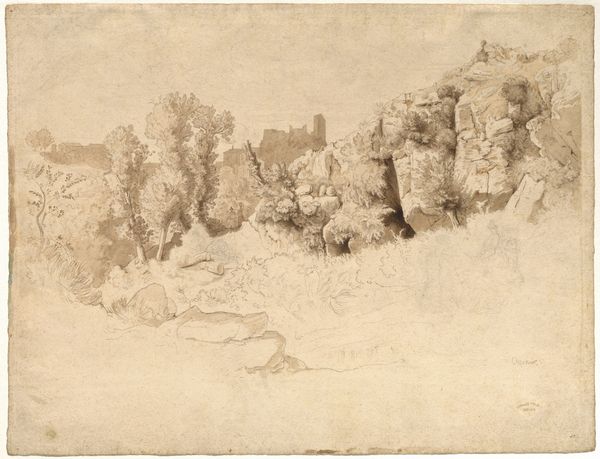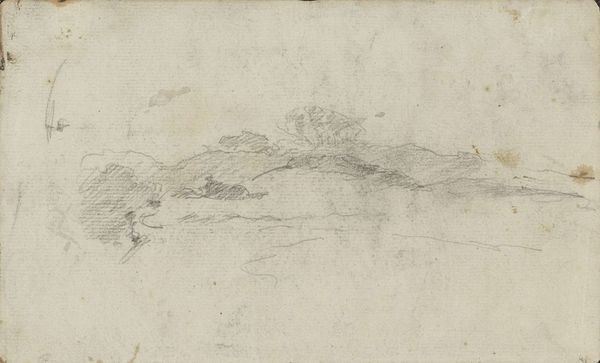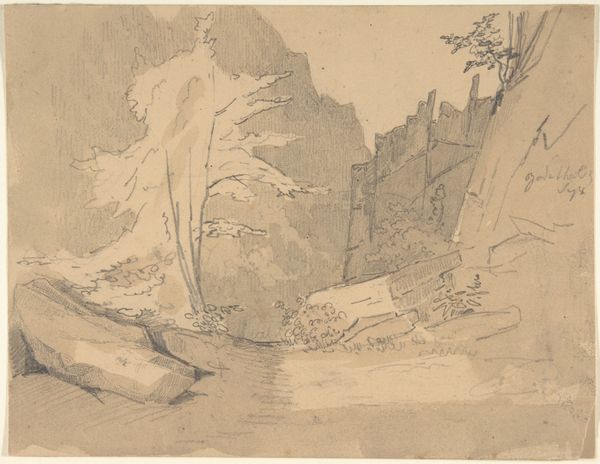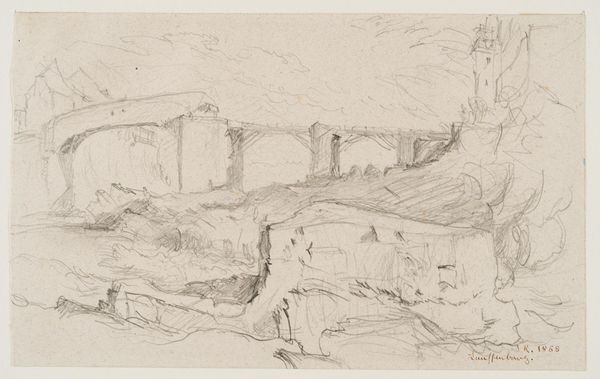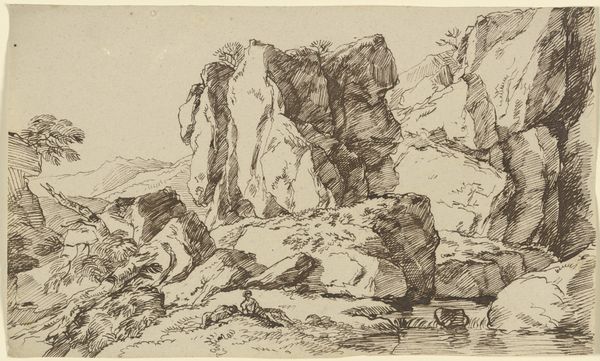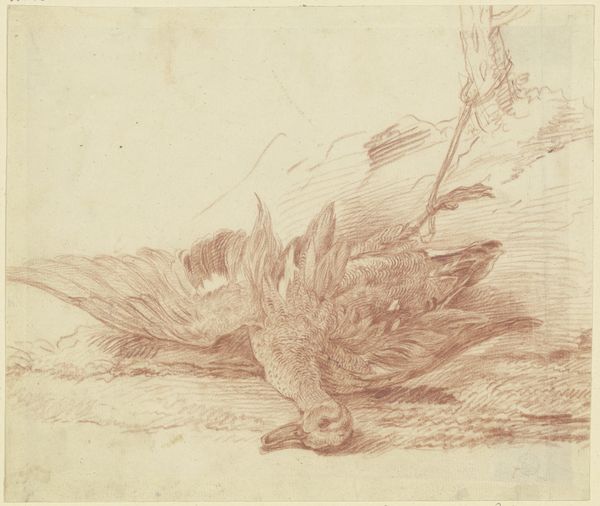
drawing, paper, ink
#
drawing
#
ink painting
#
landscape
#
paper
#
ink
#
genre-painting
#
italian-renaissance
Dimensions: sight size: 25 x 27.1 cm (9 13/16 x 10 11/16 in.) support: 32 x 34.2 cm (12 5/8 x 13 7/16 in.)
Copyright: National Gallery of Art: CC0 1.0
Curator: This is Teodoro Filippo di Liagno’s “Landscape with a Large Rock,” rendered in ink on paper sometime between 1621 and 1629. Editor: It's quite striking! The monochrome ink creates a feeling of age, even melancholy. The scale is deceptive at first; the rock dominates but tiny figures suggest human activity. Curator: Absolutely, the rock is a key symbolic element here. Rocks, especially large ones like this, can represent permanence, refuge, and even the foundations of society. Editor: The fact that there are buildings perched atop is telling too. In some cultural visual languages, placing dwellings on natural forms implies a deep connection with, or even control over, the landscape. Curator: Precisely. The relationship between architecture and nature becomes a study of power dynamics. Whose labor built the dwellings? Who controls access? And how does the structure interact with the ecology? It’s not just a pretty vista; it's a conversation about land ownership, perhaps even about early forms of tourism, offering privileged viewers vantage points over those laboring below. Editor: I am interested by those figures down below. In their small scale, perhaps they echo the figures in religious scenes or landscapes by earlier artists. The scene echoes both biblical journeys and vernacular life. The rock becomes like a kind of silent god witnessing the world below, almost inviting the viewer to be humble. Curator: It's also crucial to view such landscapes with post-colonial sensitivity. Representations of nature during this era often obscured exploitation and dispossession. Was this rock formation a site of contestation? Did its image serve to legitimize certain power structures? It is a fascinating commentary about how people affect nature. Editor: Indeed! We've explored ideas of permanence, power, religion, the history of oppression... who knew so much meaning could be mined from a rock and some ink? Curator: Exactly; art is always reflective of the socio-historical circumstances of the day. This work creates space for new kinds of looking that speak across centuries.
Comments
No comments
Be the first to comment and join the conversation on the ultimate creative platform.
